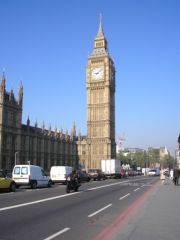| Staff numbers—British Transport police | ||||
| 2012-13 (at 23 January 2013) | ||||
| Police officers | Police staff | PCSOs | Special constables | |
|
Force Headquarters |
356 |
777 |
0 |
4 |
|
London North |
438 |
102 |
99 |
34 |
|
London South |
399 |
92 |
43 |
42 |
|
London Underground/DLR |
673 |
211 |
104 |
47 |
|
North Eastern |
271 |
74 |
16 |
33 |
|
North Western |
258 |
63 |
28 |
21 |
|
Scotland |
219 |
51 |
0 |
17 |
|
Wales and Western |
252 |
70 |
63 |
30 |
|
Total |
2,866 |
1,440 |
353 |
228 |
| 2011-12 (at 31 March 2012) | ||||
| Police officers | Police staff | PCSOs | Special constables | |
|
Force Headquarters |
333 |
758 |
0 |
4 |
|
London North |
454 |
96 |
103 |
38 |
|
London South |
404 |
87 |
51 |
58 |
|
London Underground/DLR |
675 |
212 |
74 |
60 |
|
North Eastern |
272 |
72 |
20 |
32 |
|
North Western |
256 |
64 |
32 |
24 |
|
Scotland |
218 |
45 |
0 |
13 |
|
Wales and Western |
253 |
68 |
48 |
22 |
|
Total |
2,865 |
1,402 |
328 |
251 |
| 2010-11 (at 31 March 2011) | ||||
| Police officers | Police staff | PCSOs | Special constables | |
|
Force Headquarters |
355 |
779 |
0 |
2 |
|
London North |
456 |
104 |
106 |
29 |
|
London South |
413 |
93 |
48 |
64 |
|
London Underground/DLR |
667 |
204 |
47 |
70 |
|
North Eastern |
253 |
70 |
21 |
26 |
|
North Western |
262 |
53 |
36 |
10 |
|
Scotland |
208 |
35 |
0 |
6 |
|
Wales and Western |
252 |
67 |
40 |
26 |
|
Total |
2,866 |
1,405 |
298 |
233 |
| Drivers refused and revoked for failing to meet eyesight standards | ||
| Age | 2010 | 2011 |
|
17-19 |
139 |
194 |
|
20-29 |
483 |
407 |
|
30-39 |
343 |
378 |
|
40-49 |
469 |
522 |
|
50-59 |
552 |
610 |
|
60-69 |
624 |
667 |
|
70-79 |
1,335 |
1,582 |
|
80-89 |
1,266 |
1,336 |
|
90-99 |
188 |
219 |
|
100 and over |
0 |
1 |
|
Total |
5,399 |
5,916 |
| Group 1 revoked or refused | Group 2 revoked or refused | ||||
| Total number of driver records in GB | Number | Percentage | Number | Percentage | |
|
2010 |
44,547,489 |
4,906 |
0.011 |
493 |
0.001 |
|
2011 |
45,127,884 |
5,258 |
0.012 |
658 |
0.001 |
| Accidents involving a ridden horse | |
|
2007 |
133 |
|
2008 |
109 |
|
2009 |
102 |
|
2010 |
126 |
|
2011 |
135 |
The resulting casualties from these accidents were as follows:
| 2007 | 2008 | 2009 | 2010 | 2011 | |
|
Total casualties |
159 |
139 |
114 |
156 |
163 |
|
Of which: |
|||||
|
Horse riders |
127 |
106 |
100 |
126 |
133 |

